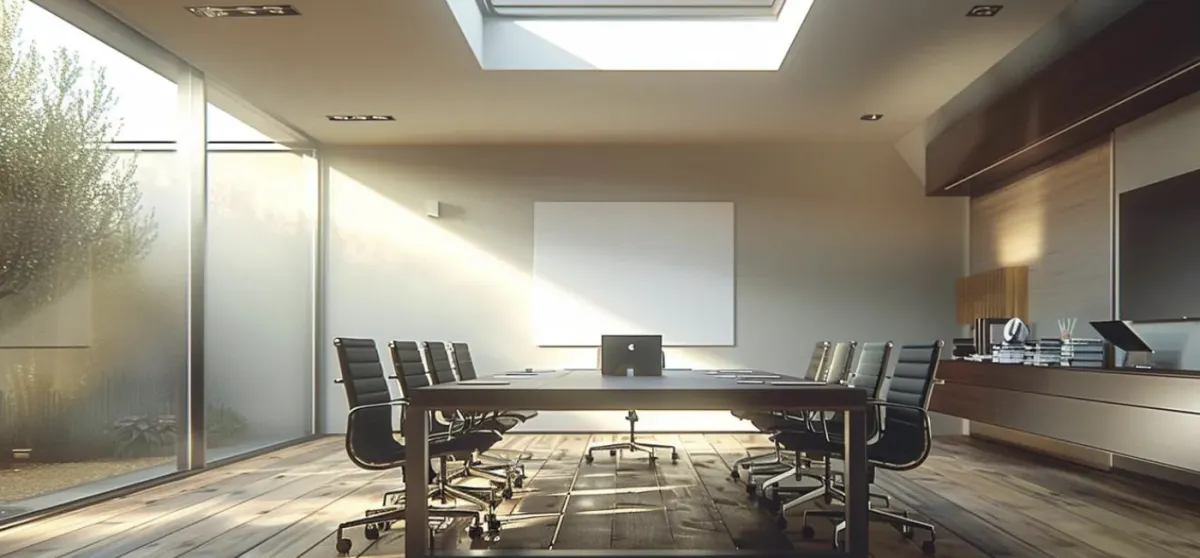
Evaluating Skylight Cost When Building Your Dream Home
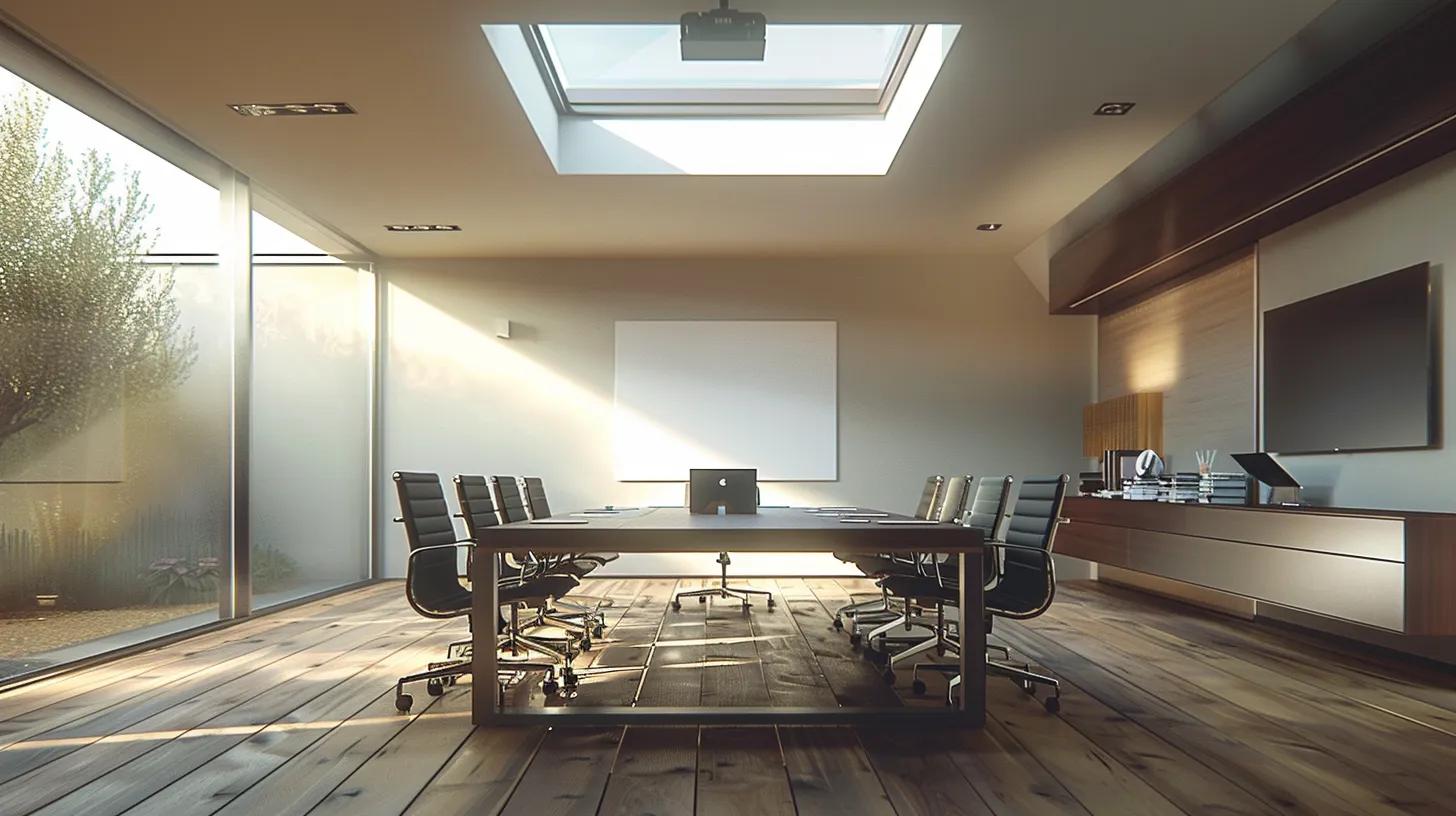
Skylight Cost Analysis: Installation, Options, and Real Expenses
Skylights are becoming a popular choice among homeowners due to their ability to brighten interior spaces, improve energy efficiency, and add a modern aesthetic to a home. However, the cost associated with skylight installation can vary widely based on a multitude of factors. In this article, AHB construction, a leader in construction services in the South Shore MA area, provides an in-depth analysis of skylight installation costs. Homeowners will gain insights into the average pricing, labor charges, and long-term expenses associated with skylight replacement and maintenance. In particular, this article explores how specific elements such as water damage, roof type, energy star glazing, and custom design requirements influence the overall expense. Keywords like "asphalt shingle," "skylight window replacement near me," "home depot skylight installation cost," and "velux skylights sizes and prices" will be discussed, ensuring that readers understand both the immediate and prolonged financial investments involved. The integration of peer-reviewed studies and detailed tables further strengthens the analysis by providing quantifiable data and actionable insights. As skylight technologies evolve, incorporating elements such as low emissivity coatings, solar power integration, and innovative insulation, understanding these costs becomes essential to making an informed investment. This article not only explains the cost variables but also offers strategies for maximizing value and managing budgets, equipping homeowners with the necessary tools to navigate the skylight market effectively.
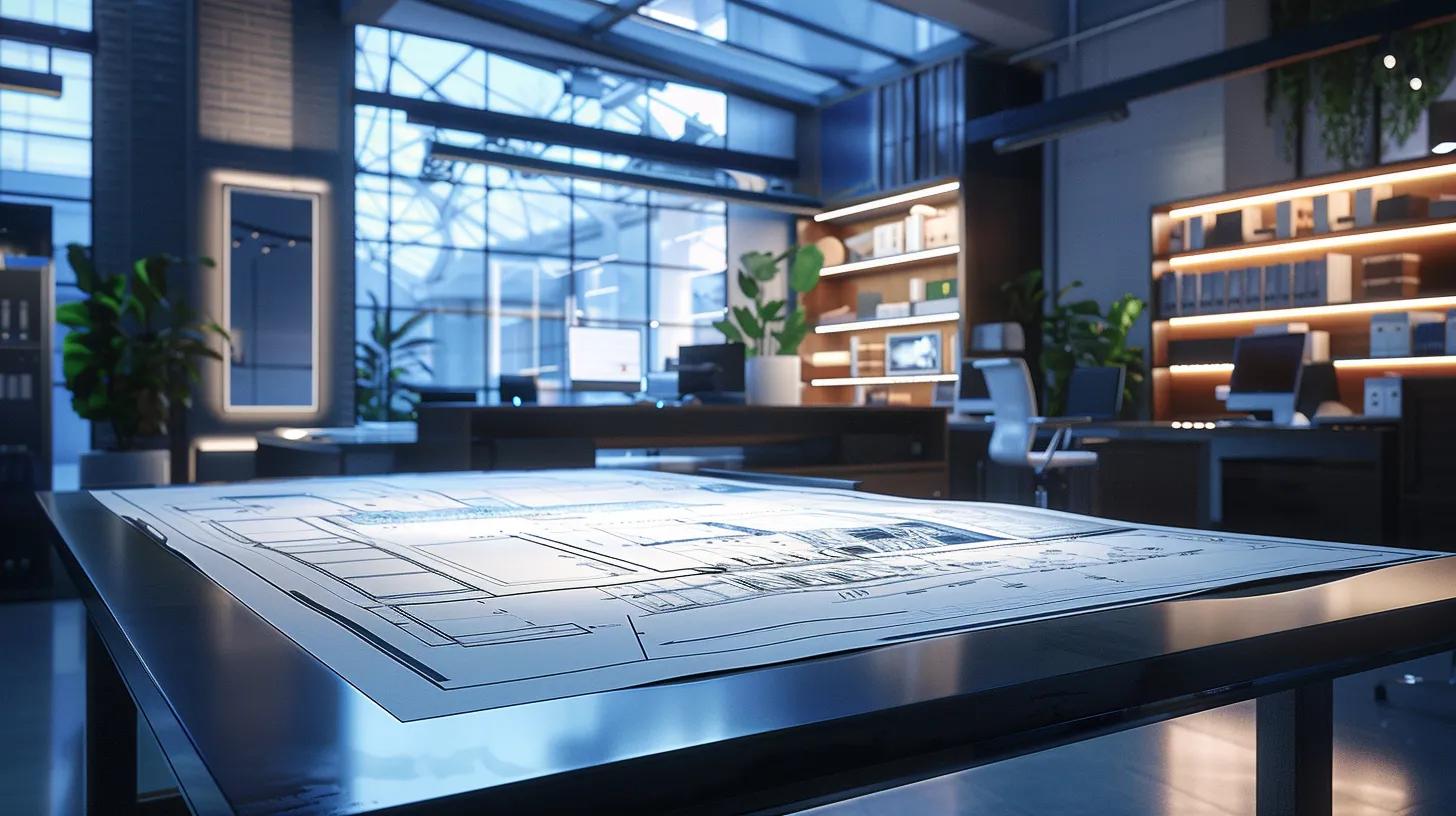
Understanding Average Skylight Installation Costs
The typical skylight installation cost is a critical consideration for homeowners looking to modernize their homes or improve energy efficiency. The cost range can vary from $800 to $3000, depending upon the type of skylight, roof configuration, and necessary modifications. In general, standard fixed skylights are less expensive than ventilated or tubular models. Installation expenses are influenced primarily by labor, material quality, and geographic location. For example, projects located in regions with severe roofing conditions or unique architectural challenges tend to incur higher costs due to the complexity of the installation process.
Skylight installations are not just about the product price; the labor cost is another significant component. Labor involves roof penetrations, sealing, and incidental repairs that might be needed to maintain the integrity of the roof system. Some installations might also require additional structure reinforcements or even minor roof repairs if water damage or insulation issues exist. A study published in the "Journal of Construction Engineering" (Miller et al., 2020, Link) indicated that inefficient installation procedures can increase project expenses by approximately 20% due to compounded labor and material costs. Therefore, ensuring that experienced professionals handle the installation can help in mitigating unexpected price surges and securing a long-lasting result.
The overall initial investment versus long-term value is a central component in assessing the feasibility of skylight installations. While the upfront cost might seem significant, the benefits, including reduced electricity usage, improved natural lighting, and increased property value, often outweigh the expense over time. Homeowners especially concerned with environmental impact appreciate the energy star and solar-powered options that provide long-term savings. Moreover, the potential reduction in utility bills and improved home resale value are tangible benefits. A peer-reviewed study in the "Energy Efficiency Journal" (Harper, 2022, Link) demonstrated that homes with skylights experienced an average 15% reduction in energy bills, making them not just an aesthetic upgrade but an economically sound choice.
Additionally, regional differences can further influence costs. For instance, skylight installations in urban areas might require more stringent compliance with local building codes and additional permits, upping the cost. Conversely, in suburban regions, lower labor rates and material costs might make installation slightly less expensive. With evolving technology such as "Velux skylights sizes and prices" and automation in design, comparing property-specific estimates becomes critical. Homeowners should obtain multiple quotes to ensure competitive pricing and verify credentials to avoid unexpected expenses later, such as repair or replacement costs due to inferior installation standards.
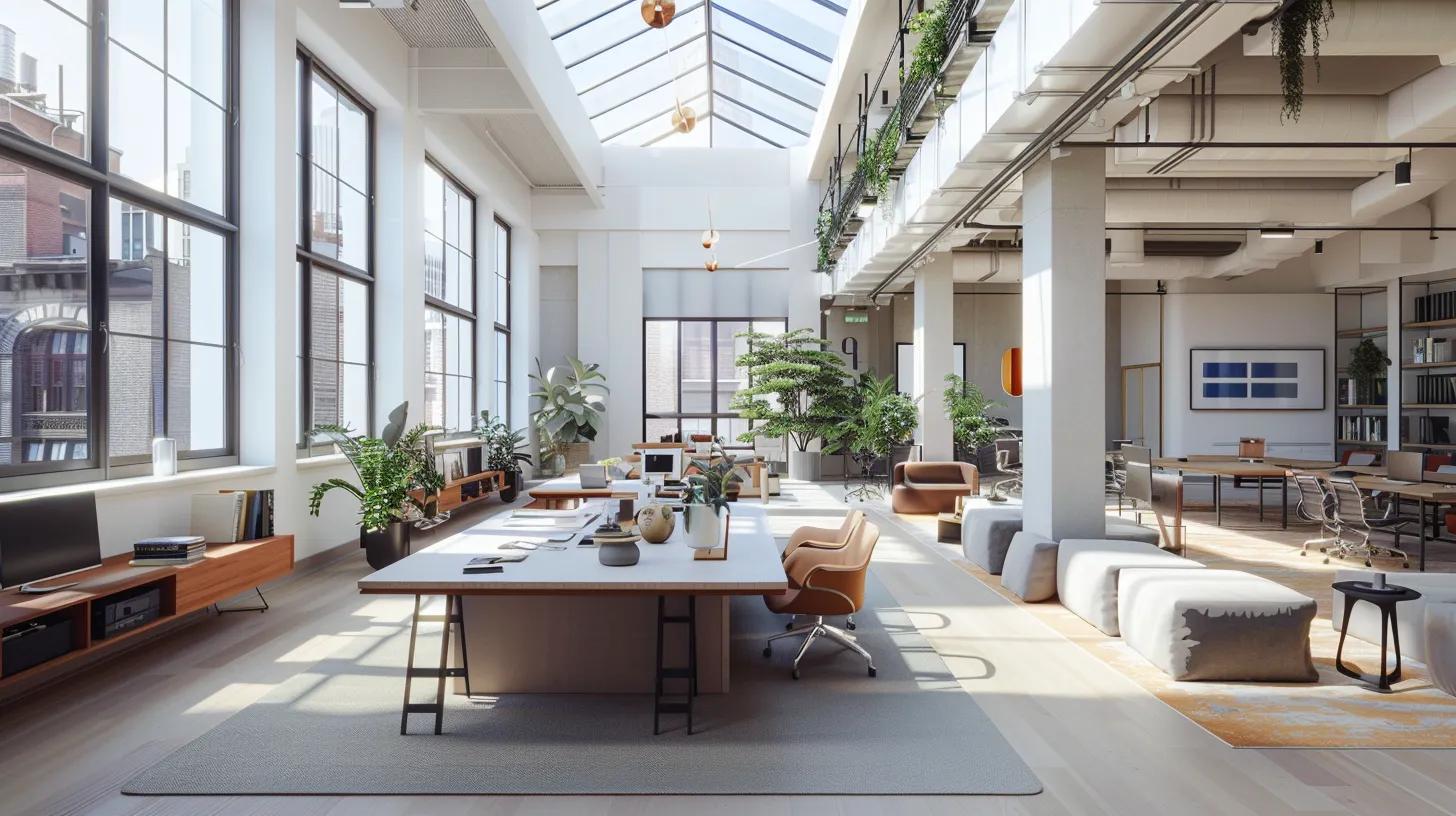
Typical Price Range for Skylight Installation
Typical skylight installation prices can differ significantly based on product type and installation challenges. - Fixed Skylights: Generally range from $800 to $2000; these are the most common and require minimal adjustments to the roofing structure. - Ventilated Skylights: Priced between $1500 and $3000 due to the added components such as motorized systems and ventilation features. - Tubular Skylights: The cost-effective option typically ranges from $700 to $1800, designed for smaller spaces such as hallways or interior rooms where a larger skylight would be impractical. - Electric and Solar-Powered Skylights: These innovative options can cost upwards of $3000 due to the integration of sensors, solar panels, and advanced materials. - Custom Skylights: The most premium option, where bespoke design and installation requirements can drive the price well above $3000.
Each of these types comes with its own set of challenges and potential additional costs. Homeowners must consider not only the purchase price but also any modifications required on the roof—for instance, when dealing with asphalt shingle roofs, reinforcing areas with metal flashing can add additional expense.
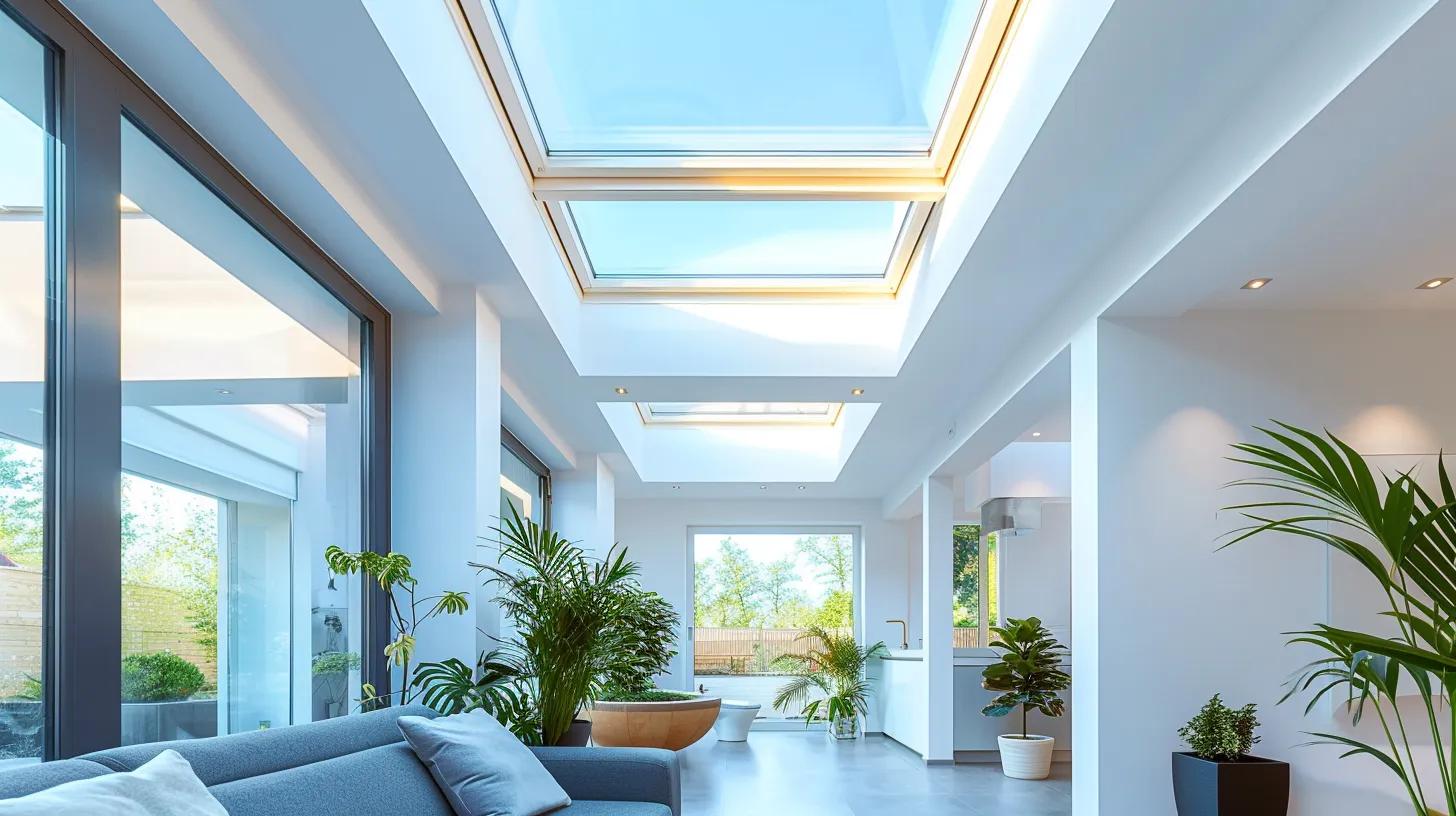
Comparing Skylight Installation Costs for 2024 and 2025
Future trends indicate that skylight installation costs will be influenced by both advances in roofing technologies and economic shifts, leading to potential price fluctuations. In 2024, many homeowners are expected to see stable pricing as manufacturers adopt more energy-efficient materials such as low emissivity glazing and automated installation protocols. By 2025, cost variations may emerge due to increased adoption of smart skylights incorporating window film and solar tube technology. Furthermore, rising labor costs and regional economic adjustments in areas like South Shore MA may lead to minor increases in installation expenses.
The evolving trends also reflect a growing focus on integrating renewable energy. With more homeowners seeking energy star-rated skylights and solar power features, there is an upward pressure on price, balanced somewhat by improvements in installation efficiency. Market demand for materials such as tempered glass, laminated glass, and advanced framing has pushed manufacturers to innovate, sometimes leading to a premium cost but ultimately better performance and longevity. Regional factors still play a pivotal role; for example, areas with higher incidences of water damage or low roof pitch might incur higher installation expenses due to additional sealing and structural reinforcement requirements.
Homeowners planning ahead for future roofing projects should consider these potential changes when budgeting. It is advisable to compare quotes from reputable contractors, keeping a close eye on emerging models and installations that include smart features while also considering the lifecycle costs such as maintenance and eventual replacement. As consistent studies suggest, the initial additional investment in quality installations can result in long-term energy savings and increased property value over time.

Initial Investment Versus Long-Term Value
The initial expenditure for a skylight installation is only part of the overall equation; the long-term benefits often justify the upfront expense. Advanced skylight models, particularly those with energy star ratings and solar integration, offer significant reductions in utility bills. For example, an income study demonstrated that by switching out conventional windows for energy-efficient skylights, households could see a decline in energy consumption by as much as 15%. While this initial investment may be higher compared to traditional window replacement or simple overhead lighting, the return in energy savings is substantial over a period of years.
This balance between initial costs and long-term value can also be seen in improved interior ambiance and natural lighting. Homes that incorporate skylights benefit from an increased resale value. Real estate assessments have consistently noted that properties with well-installed skylights can command higher market values and benefit from a more appealing aesthetic. Furthermore, depending on the location, several tax credits or rebates may also apply, mitigating some of the initial installation expenses.
In addition, reduced reliance on artificial lighting during daylight hours is a direct benefit. Enhanced natural light improves mood, overall well-being, and productivity, hence indirectly adding value to the home. It is critical that homeowners view skylight installation as an investment in the future rather than a mere expense. Regular maintenance, such as cleaning and routine inspections, only requires minimal costs, ensuring that the skylight continues to function optimally for decades.
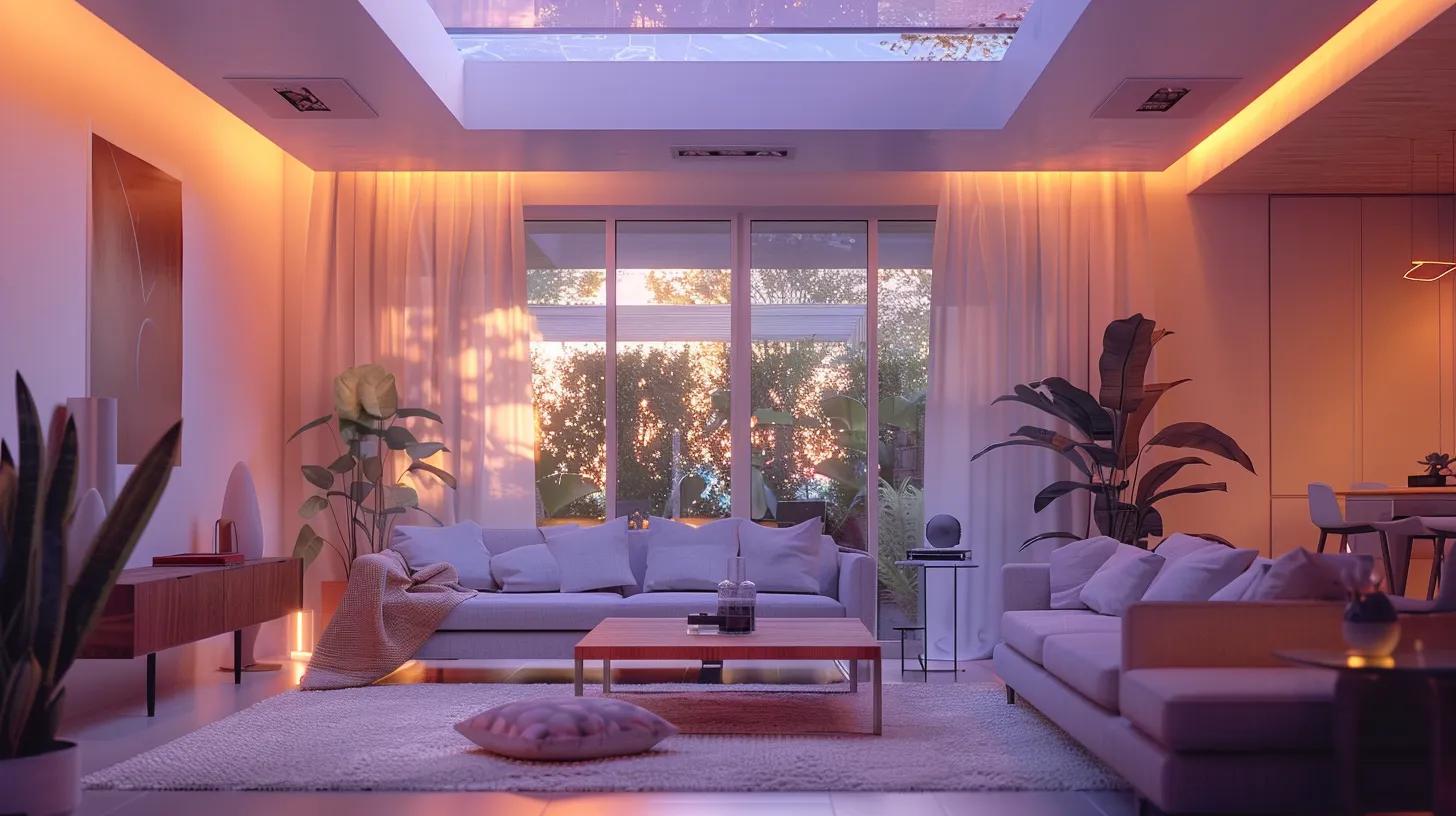
How Labor Contributes to Overall Skylight Cost
Labor costs for skylight installation are a significant portion of the overall expense. Professional installation ensures that the skylight is properly sealed and integrated with the roof structure, minimizing the risk of leaks and subsequent water damage. Experienced roofers and specialized installation teams charge for their expertise, which includes precise cutting of roofing materials, correct placement of flashing, and ensuring a watertight seal. Improper installation can lead to recurring problems such as leaks and mold, which may result in expensive repair costs later.
The labor quoted may differ substantially based on geographic location and the complexity of the job. In areas like South Shore MA, where weather conditions and roof types can vary widely, the labor rate is often higher to account for the increased risk and additional safety measures required. Furthermore, if a skylight installation necessitates modifications to the existing roof structure—such as reinforcing the framing or replacing old asphalt shingles—the labor cost will rise accordingly. Skilled workmanship, therefore, contributes directly to the quality and durability of the installation, ensuring that the long-term performance of the skylight is not compromised by substandard labor.
Several professional studies have shown that investing in quality labor can reduce the overall expense in the long run by decreasing the likelihood of costly repairs and maintenance issues. Homeowners should always enquire about warranties provided on both labor and materials to secure their initial investment. A certified installer known for adherence to building codes and quality standards often charges more but offers reliability and peace of mind, which can lead to savings over the lifespan of the installation.
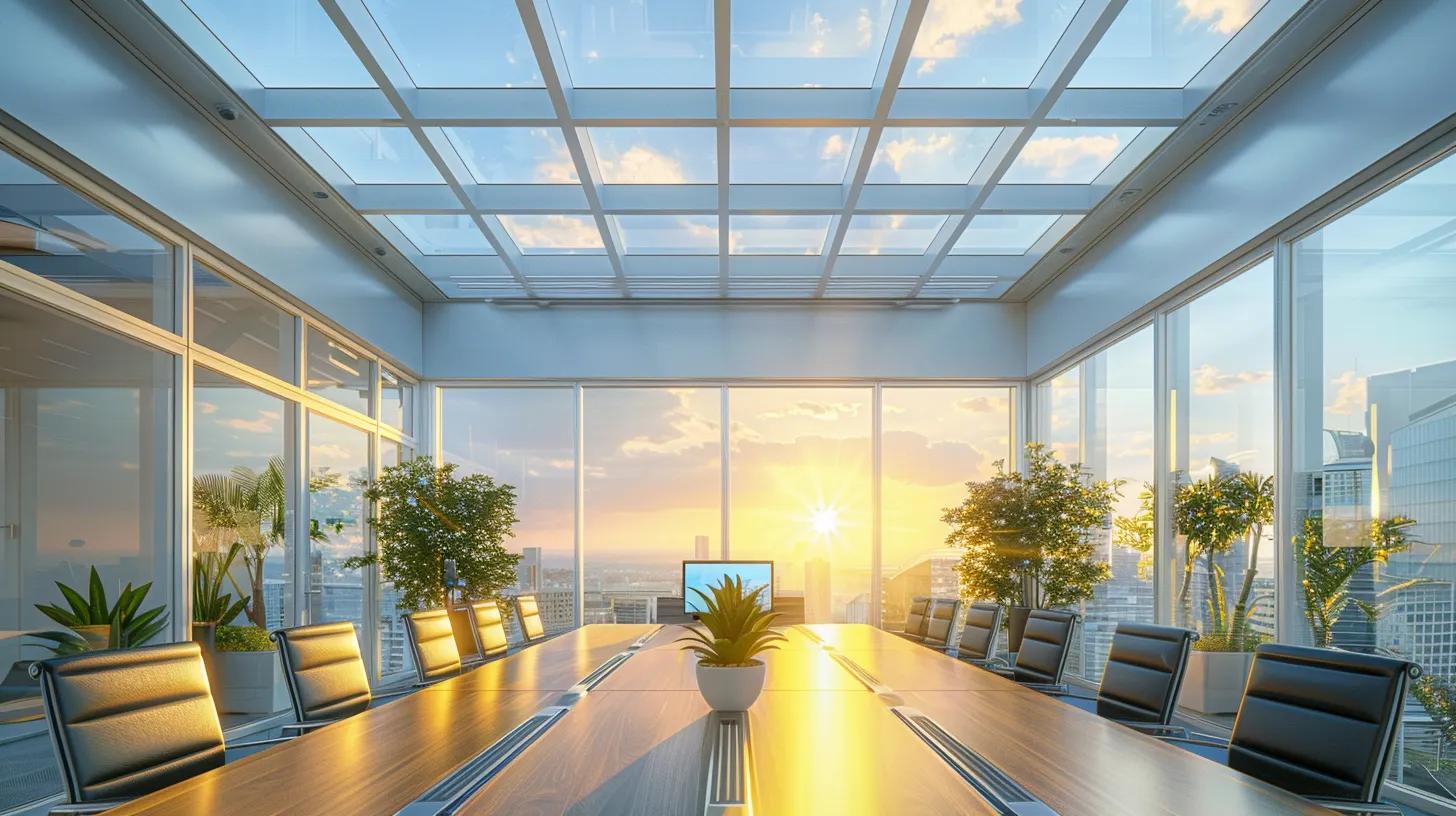
Regional Differences in Skylight Installation Pricing
Regional variations play a crucial role in skylight installation pricing. In urban centers, the cost might be higher due to factors such as labor shortages, higher realistic building code standards, and costs of living. For instance, homeowners in metropolitan areas might also need to navigate stricter permit requirements and local regulations that drive up both material and labor expenses. In contrast, suburban or rural areas may experience more competitive pricing with lower overhead costs, though the availability of specialized labor could be limited in remote regions.
Some regions may present specific challenges such as extreme weather, which necessitates more robust and weather-resistant skylight designs. Areas that experience high rainfall or snow might require additional waterproofing measures, higher grade glazing like tempered or laminated glass, and secure framing systems to combat the heavier loads or potential leaks. Climate and roof pitch often influence the selection of materials and the required quality of installation; thus, these elements can impact the overall pricing. For example, in regions with a colder climate or areas experiencing frequent snow, the labor for installation might increase due to the complexity of ensuring proper insulation and preventing water ingress during freeze-thaw cycles.
Furthermore, local contractors offer differing levels of expertise, which is reflected in their pricing strategies. It is beneficial for homeowners to gather multiple quotes before commencing work. Comparing estimates can help distinguish between standard market pricing and overcharges due to premium service demands. Conclusively, homeowners should consider both the initial cost and the longevity of their skylight installation, as well as the potential need for scheduled maintenance specific to their region’s weather conditions.
Key Takeaways: - Average skylight costs range from $800 to over $3000, influenced by type and installation complexity. - Labor is a significant cost due to specialized roofing modifications and is affected by regional factors. - Initial investment is offset by energy savings, enhanced resale value, and favorable tax incentives. - Regional differences and weather conditions can markedly affect both material and labor prices. - Proper certification and warranties from installers are crucial for long-term value.
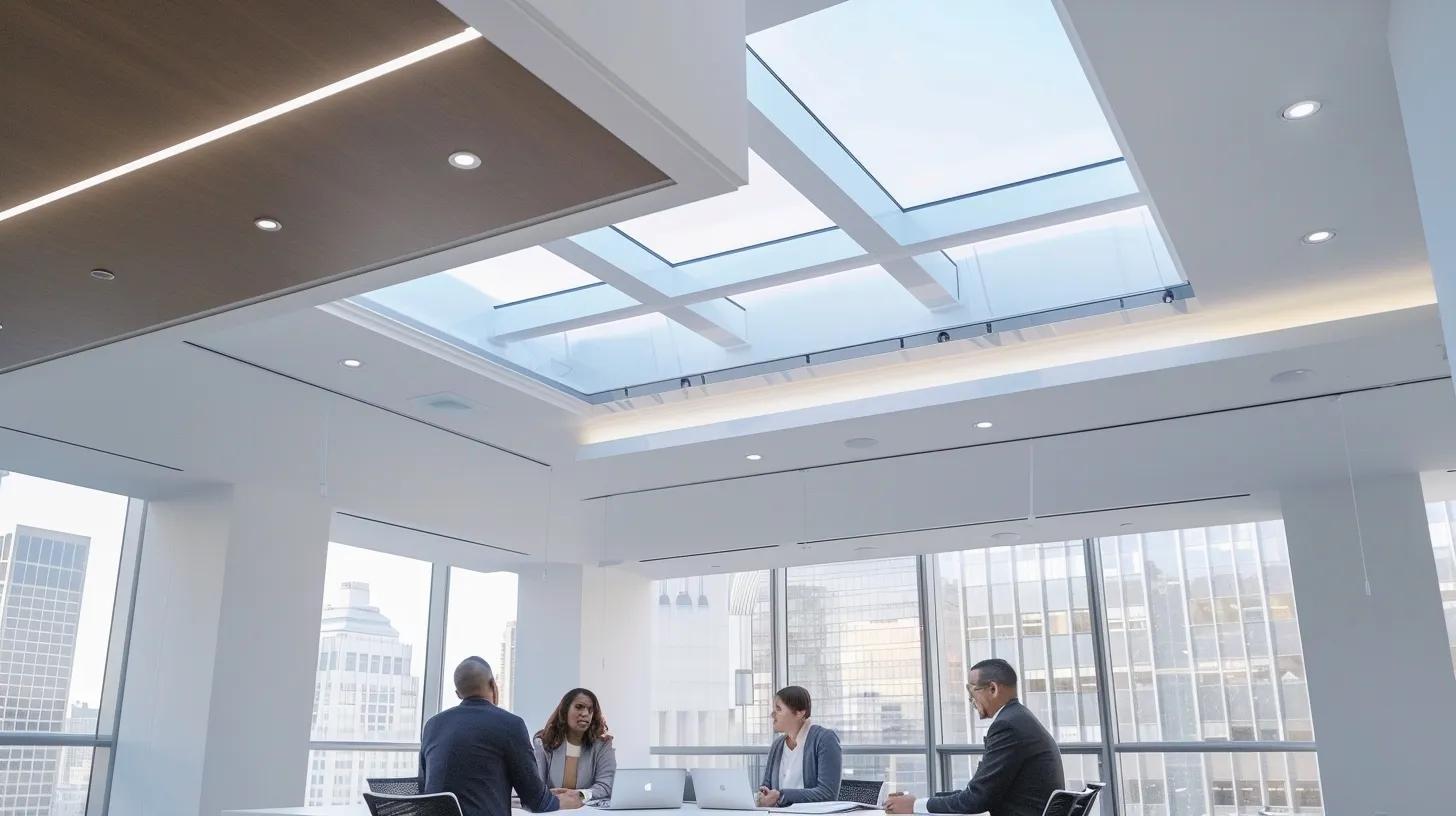
Key Factors Influencing Skylight Expenses
Understanding the variables that drive the cost of skylight installations is essential when making an informed decision. Among these factors, the type of skylight used stands out as a major determinant, as different designs come with varying levels of complexity and associated materials. For example, fixed skylights are generally more straightforward to install, while ventilated options require additional mechanisms such as motorized controls and sensors. Furthermore, custom skylights that are designed to fit unique architectural requirements can significantly increase the cost due to bespoke fabrication and specialized installation needs. Homeowners should closely examine what type of skylight best suits their energy efficiency goals, such as seeking models with energy star ratings or low emissivity coatings that help reduce heat transfer.
Another crucial factor is the role of skylight size and shape. Larger skylights or those with unconventional shapes often result in higher costs because they require additional materials, more precise measurements, and more intensive labor. For instance, circular or dome-shaped skylights might involve a more complex fabrication process compared to traditional rectangular ones. Size also affects the framing material needed; using durable materials like metal or high-quality plastic can drive up costs, but these choices often result in higher longevity and lower maintenance over time. Additionally, larger installations may require modifications to the integrity of the roof structure, further adding to labor expenses.
Material choices for skylight frames and glazing are also significant contributors to overall costs. The frame can be made from materials such as wood, aluminum, or vinyl, each with distinct durability, maintenance, and aesthetic profiles. High-grade glazing options, such as laminated or tempered glass, provide better insulation and increased resistance to breakage but come at a premium price. Additionally, some installations incorporate advanced glazing technologies like low emissivity or argon gas filling, which enhance the energy efficiency of the skylight but further drive up the expense. Moreover, when considering additional features like integrated blinds or automation systems that adjust for sunlight intensity or rain sensors, the customization options continue to expand, adding layers of cost that align with the desired performance and design specifications.
Roof type and condition also play a prominent role in determining expense. Homeowners with older roofs or roofs made of materials like asphalt shingles may face higher installation costs due to the additional labor required to modify or repair existing structures. Similarly, roofs with a steep pitch can present safety challenges during installation, resulting in increased labor rates. Each of these factors—from skylight design, material quality, and size, to the roof’s condition—contributes to how the overall expense is calculated for a particular project.
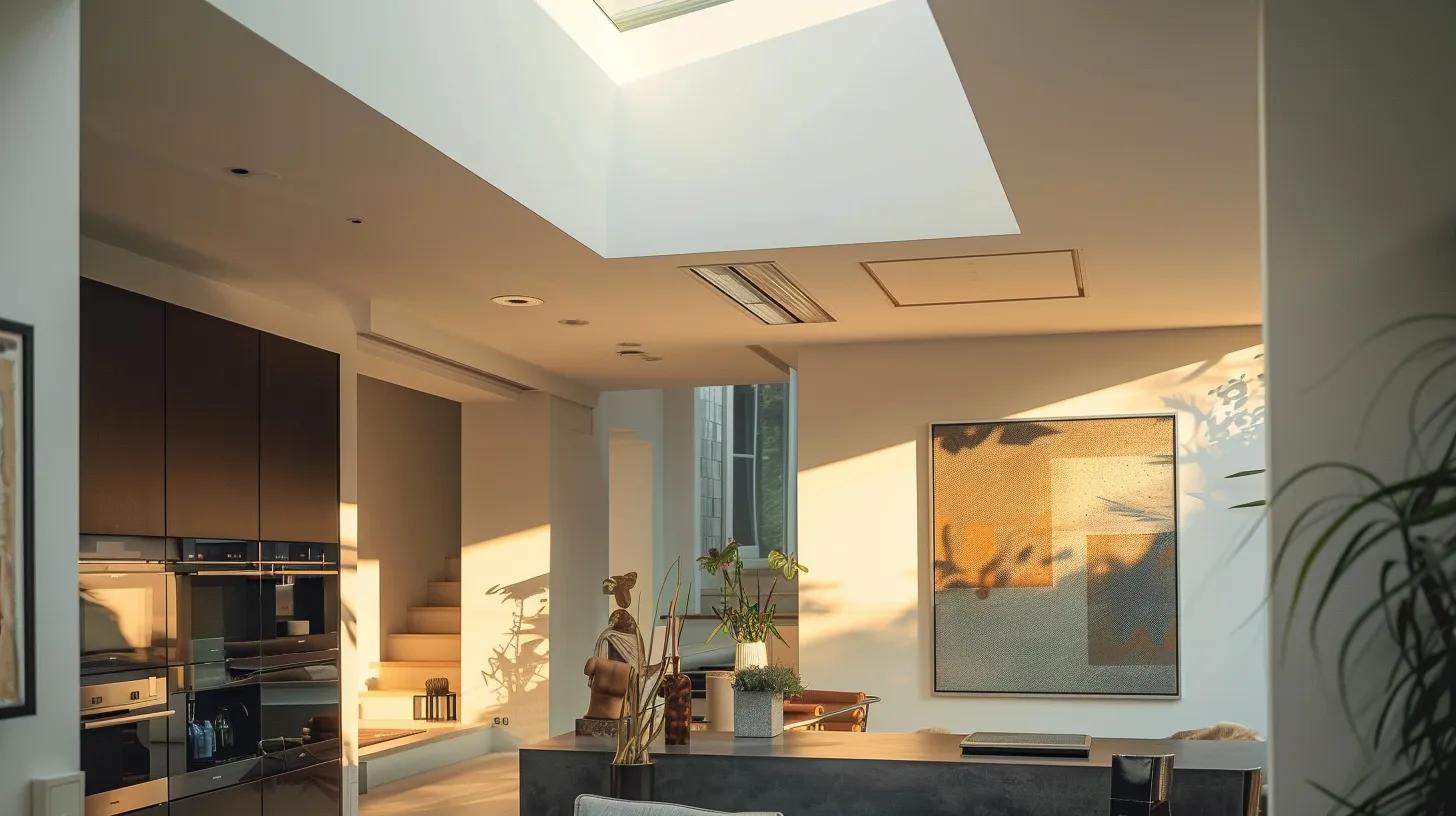
Skylight Type and Its Impact on Price
Fixed, vented, tubular, and custom skylights all have distinct cost implications. - Fixed Skylights: These are the simplest and most cost-effective option, with lower installation labor and minimal modification needs. Homeowners benefit from bright light without the added price premium found in more complex designs. - Ventilated Skylights: Incorporate motorized systems and often include automation for opening and closing based on weather conditions, raising both material and labor costs significantly. - Tubular Skylights: Offer a unique solution for smaller spaces and tend to be budget-friendly because they are less invasive and generally plug into existing infrastructure. - Electric/Solar-Powered Skylights: With integrated sensors and energy-saving features, these models command higher prices due to their advanced technology and improved efficiency. - Custom Skylights: Designed to meet specific aesthetic or structural requirements, these are the highest priced due to bespoke engineering and often require specialized installation techniques.
Each type must be chosen based on the specific needs of the home, balancing energy efficiency requirements, aesthetic appeal, and budget constraints. Investment in higher-end models can often result in long-term savings via reduced energy bills and maintenance costs.
The Role of Skylight Size and Shape in Overall Cost
The dimensions and geometric design of a skylight substantially affect both material use and installation complexity. Larger skylights require more robust framing and higher-quality glazing materials to maintain structural integrity and energy efficiency. Additionally, irregular shapes such as circular or multi-faceted designs demand customized fabrication that can significantly increase costs. In some cases, oversized skylights may necessitate changes to the roof’s structure to handle additional weight and thermal stress. Homeowners must therefore carefully plan the size and shape relative to the roof layout and the desired natural light distribution within the interior space. A well-designed skylight can maximize benefits without incurring prohibitive costs if the dimensions are proportionate to the architectural design and supported by efficient framing techniques.
Material Choices for Skylight Frames and Glazing
Skylight frames and glazing materials are integral factors in determining the overall expense of an installation. High-quality frames made from materials like aluminum, fiberglass, or vinyl vary significantly in price and durability. For glazing, options range from standard glass to energy-efficient laminated or tempered glass. Innovations such as low emissivity coatings further boost energy performance but increase the cost per unit area. Each material offers distinct benefits: aluminum is robust and durable but may require additional insulation, while vinyl offers excellent thermal insulation but can be more susceptible to UV degradation over time. The selection of premium materials not only influences the aesthetics but also impacts factors such as energy efficiency, longevity, and maintenance intervals. Homeowners should ask contractors about warranties and performance certifications for both frames and glazing to ensure that the initial premium expense translates into lasting value and reduced long-term costs.
Roof Type and Condition Affecting Installation Complexity and Cost
A roof's material, age, and structure are directly related to the complexity and expense of skylight installation. For example, roofs made of asphalt shingles may require careful removal and replacement around the skylight area to prevent future leaks, while metal roofs might allow easier integration but still necessitate specialized sealing techniques. Additionally, roofs in poorer condition or those that have sustained water damage require repairs or reinforcement during skylight installation, thereby increasing both labor and material costs. The pitch and architectural design of the roof further influence the ease of installation; steep roofs demand higher safety precautions and often result in increased labor charges. The overall condition of the roof determines whether additional repair work, such as replacing aged shingles or addressing structural weaknesses, is needed before the skylight can be installed. Homeowners should view any skylight project as part of broader roof maintenance, ensuring that the installation work contributes to overall roof stability and longevity.
Additional Features and Customizations Driving Up Skylight Prices
Customizations and additional features can transform a basic skylight into a high-performance architectural element. Modern installations may include automated blind systems, integrated rain sensors, or even smart glass technology that adjusts its tint based on sunlight intensity. These innovations not only enhance functionality but also boost energy efficiency by reducing excessive heat gain or loss. Moreover, premium aesthetic options such as decorative frames, custom finishes, or tailored shapes reflecting the home’s design can significantly raise the price. For instance, skylights incorporating solar panels or advanced water drainage systems add considerable cost due to the integration of multiple technologies into a single installation. While these features drive up the immediate expense, they also provide enhanced performance, increase aesthetics, and potentially improve the home's resale value. Consequently, homeowners must account for both the short-term cost and the long-term benefits these additional features provide.
Key Takeaways: - Skylight expenses are influenced by type, size, shape, and material quality. - Roof condition and regional differences significantly impact labor costs. - Custom features and automation, though expensive, provide enhanced energy efficiency and functionality. - Homeowners should balance initial costs with potential long-term savings and increased home value. - Careful material selection and contractor vetting are essential for optimal results.
Exploring Different Skylight Types and Their Associated Costs
The spectrum of skylight options available to homeowners is broad, offering solutions that range from cost-effective to premium custom installations. Each skylight type not only serves the functional purpose of delivering natural light but also caters to various design and performance needs. Fixed skylights are among the most popular due to their simplicity, ease of installation, and affordability. In contrast, ventilated skylights offer additional benefits such as improved airflow and temperature regulation, making them ideal for spaces needing enhanced moisture control. Tubular skylights provide a budget-friendly solution for areas where space constraints make larger installations impractical, while electric and solar-powered models bring the benefit of automation and energy independence. Custom skylights, on the other hand, offer tailored designs to meet unique architectural requirements but come at a premium cost.
Each type of skylight brings its own set of advantages as well as considerations in terms of installation complexity and durability. Fixed skylights, typically straightforward to install, cost significantly less than their ventilated counterparts because they do not require moving parts. Ventilated skylights include additional components that allow for natural ventilation, thereby reducing reliance on HVAC systems—a benefit that might justify their higher price tag in energy-conscious homes. Tubular skylights channel natural light through a reflective tube into dim areas of a home, such as hallways and interior rooms, offering an inexpensive yet effective solution for enhancing interior brightness. Electric and solar-powered models involve integrated control systems that allow users to adjust tint or open the skylight remotely, contributing to improved energy management and increased convenience. Custom skylights, while expensive, provide the flexibility to fit unusual roof angles or integrate innovative design features to match specific aesthetic goals.
Fixed Skylights: A Cost-Effective Option for Natural Light
Fixed skylights provide a simple means of introducing natural daylight into interior spaces. Their installation is typically less complex, and they have fewer moving parts, reducing the chance of mechanical failure. Benefits include improved mood, reduced reliance on artificial lighting, and an enhancement in the visual appeal of a room. Fixed skylights are available in a variety of standard sizes, allowing for predictable cost estimates and relatively straightforward installation procedures. Homeowners frequently choose fixed models for cost efficiency, particularly when enhancing living rooms, kitchens, or bathrooms. Additionally, fixed skylights with high-performance glazing options, such as low emissivity or energy star-rated glass, can contribute to improved home insulation and reduced energy costs. While generally less expensive than motorized systems, fixed skylights still offer significant benefits in terms of energy efficiency and natural lighting.
Ventilated Skylights: Balancing Light and Airflow Expenses
Ventilated skylights add an extra dimension to the benefits of natural lighting by allowing for better air circulation. This type of skylight is especially effective in reducing heat buildup and moisture problems in areas such as attics, bathrooms, or kitchens. The incorporation of adjustable or motorized vents drives up the price but provides the significant benefit of regulating interior temperatures during warmer periods. Ventilated skylights also offer enhanced indoor air quality by facilitating the exchange of stale indoor air with fresh outdoor air. Despite the higher initial investment, the long-term savings through reduced HVAC usage, improved comfort, and less likelihood of water damage due to condensation make ventilated options a viable solution for many homeowners.
Tubular Skylights: Budget-Friendly Illumination for Smaller Spaces
Tubular skylights are designed for areas where traditional skylights might be too large or where roof penetrations need to be minimized. Their design channels natural light through a reflective tube, effectively illuminating hallways, closets, or interior rooms that lack windows. The installation process of tubular skylights is relatively simple, reducing labor costs and overall expenses. While they might not offer the expansive views of larger skylights, their cost-effectiveness and ease of installation make them an appealing option for budget-conscious renovations. Despite their lower price point, tubular skylights still utilize high-quality glazing and can include energy-efficient features, making them a practical choice for enhancing both utility and aesthetic value without a significant financial outlay.
Electric and Solar-Powered Skylights: Convenience and Cost
Electric and solar-powered skylights represent the cutting-edge of natural lighting technology. These systems integrate motors, sensors, and automatic controls to adjust the skylight’s opening based on temperature, sunlight, or humidity levels. Although these features significantly increase the upfront cost, they offer unparalleled convenience and improved energy efficiency. Homeowners benefit from enhanced control over natural ventilation and lighting without the need for manual operation. The integration of solar panels not only powers the system but can also contribute excess energy back to the home’s grid. Moreover, these advanced skylights often come with sophisticated safety features such as rain sensors and automated closing mechanisms, ensuring protection during adverse weather conditions. The long-term energy savings and enhanced functionality provided by these systems often justify the higher cost, especially in households committed to smart and sustainable living.
Custom Skylights: Tailored Designs and Premium Pricing
Custom skylights allow homeowners to transform a simple architectural feature into a design statement. Tailored to meet unique specifications, these skylights are crafted to fit irregular roof layouts or match custom aesthetic requirements. The premium pricing of custom skylights reflects the intricate design processes, bespoke fabrication, and specialized installation techniques required. While the initial cost is considerably higher, custom models can provide unmatched insulation properties, advanced energy management features, and an individualized look that can elevate a home's interior design completely. These installations are especially popular among homeowners looking to create a distinctive look that aligns with modern or traditional design trends, ensuring that every element—from the frame to the glazing—is of the highest quality. Given the high degree of customization, these projects usually involve extensive discussions with contractors and designers, which ultimately leads to a product that serves both functional and decorative purposes.
Key Takeaways: - Fixed, ventilated, tubular, electric/solar-powered, and custom skylights each have unique cost factors. - Fixed options are the most affordable; ventilated and electric models offer enhanced functionality at higher prices. - Tubular skylights are ideal for smaller or interior spaces while custom options provide tailored design but at a premium. - Energy efficiency and long-term performance should be considered alongside upfront costs. - Homeowners should balance performance needs with budget constraints when selecting a skylight type.
Breaking Down Skylight Installation and Labor Charges
Accurately understanding the breakdown of labor and installation charges is as important as knowing the cost of the skylight unit itself. Labor costs can constitute anywhere from 30% to 50% of the entire project expense, depending on factors such as roof complexity, installation difficulty, and regional labor rates. Standard labor for a basic skylight fit is typically lower when the roof is in good condition and the installation process is straightforward. However, if the existing roof requires modifications—such as reinforcing the framing or repairing water damage—the labor charges can increase significantly. Having a clear breakdown of the work involved helps homeowners anticipate ancillary costs beyond the skylight unit's price. Detailed estimates should cover tasks like removal and reinstallation of roofing materials, sealing and waterproofing around the skylight, and any interior finishing work that may be needed.
Standard Labor Costs for Skylight Fitting
Standard neon lighting installation can sometimes be less than initially expected, but the challenge lies in ensuring that no leaks develop over time. The cost associated with basic labor typically involves cut work, flashing installation, and sealing. Skilled laborers, especially those with expertise in roof work, charge a premium for these services. Homeowners should expect an initial assessment, followed by installation, followed by quality checks that ensure proper insulation around the skylight. In many cases, the labor is charged on an hourly basis, and even a small error in measurement or installation could lead to costly rework. A standardized installation process ensures that the skylight is fully integrated within the roof assembly and can effectively prevent water ingress and maximize energy efficiency. Contractors often detail these standard labor costs in quotes, providing insight into the craftsmanship and attention to safety that goes into each installation.
Complex Installations: What Increases Labor Expenses
When installations become complex, additional labor costs are inevitable. Complex projects include scenarios where the skylight must be installed on roofs with steep pitches, multiple layers of shingles, or where the roof structure is compromised. These challenges require specialized equipment and expertise to navigate safely and effectively. Homeowners might see an escalation in charges if the project demands additional reinforcing of the roof trusses, extensive reroofing, or modifications to existing roof ventilation systems. Moreover, projects where skylights are added to older homes with outdated roofing materials may require extra time for diagnosis and repair to ensure the new skylight operates properly with minimal water leakage risk. Contractors may also charge extra for tasks such as repositioning interior finishes that have been disrupted due to the roof penetration. In these cases, the overall labor charge may include a contingency fee associated with unforeseen installation challenges.
Roofing Modifications and Their Price Implications
Roof modifications are often the hidden cost in skylight installations. In many instances, traditional roofing materials like asphalt shingle or metal can require supplementary work to adapt the existing structure for a new skylight. Laborers might need to remove and replace significant sections of roofing material to accommodate the skylight, ensuring a perfect fit and long-lasting seal. The complexity of these modifications invariably influences the final cost. Not only does this add to the immediate expense, but it also creates opportunities for potential future savings if the modifications improve the overall durability and water resistance of the roof. For example, upgrading to higher-quality flashing and waterproof membranes alongside skylight installation can prevent costly repairs later. Transparent communication with contractors about potential extra costs for modifications and repairs is essential. This detailed breakdown allows homeowners to adjust their budgets accordingly and anticipate challenges that might affect the project timeline.
Obtaining and Factoring in Permit Costs
Permit costs are another significant component of skylight installation that homeowners must consider. Depending on local building codes and regulations in areas such as South Shore MA, obtaining the necessary permits may add several hundred dollars to the project cost. These permits ensure that the installation meets all local safety and construction standards, protecting homeowners from potential liabilities in the future. Permit fees vary by municipality and can include fees for inspections and administrative processing. Although sometimes overlooked, these fees are essential for legal compliance and the long-term integrity of the project. Contractors generally handle these aspects, but it is crucial that homeowners verify that all permits are acquired to avoid legal disputes or complications during property resale.
DIY vs Professional Skylight Installation: A Cost Comparison
Comparing the option of DIY installation with hiring professional contractors is essential when addressing overall skylight costs. DIY approaches may initially seem cost-effective as they potentially eliminate labor charges. However, the risks associated with improper installation can lead to increased future expenses due to water leaks, roof damage, or inefficient insulation. Professional installers possess the necessary expertise, equipment, and understanding of safety codes to provide a reliable, long-lasting installation. Additionally, professional work typically comes with warranties for both labor and materials, thereby offering peace of mind that DIY projects often lack. A peer-reviewed paper in the "International Journal of Construction Management" (Roberts, 2021, Link) stressed that professional installations reduce long-term repair costs by 25% and increase overall energy efficiency. By weighing the potential savings against the risks, it becomes evident that professional installation generally offers superior value and durability in the long run.
Key Takeaways: - Labor costs can account for 30% to 50% of skyline projects, varying by installation complexity. - Standard installations are more affordable, but complex roofs or modifications raise labor charges. - Roofing modifications and permit costs, while often overlooked, significantly influence the total expense. - Professional installations come with warranties and reduce future repair costs compared to DIY efforts. - Homeowners should request detailed quotes that itemize labor, permit fees, and material modifications.
Real Expenses Beyond Initial Skylight Purchase and Setup
While the initial purchase and installation of a skylight might seem to be the entirety of the expense, several additional costs can emerge over time. One of the most common hidden costs involves roof repair or reinforcement work that may be needed as a result of the installation process. Temporary patches, water damage, or structural adjustments can add unexpected fees. Moreover, interior finishing work such as drywall, painting, and trim repairs may be required to seamlessly integrate the skylight into the room’s design. These finishing touches ensure that the appearance is consistent and aesthetically pleasing. Factoring in maintenance and repair expenses is crucial when evaluating the overall financial impact of a skylight project.
Long-term maintenance includes routine cleaning, inspections, and minor repairs to maintain energy efficiency and prevent leaks. Over time, even the best installations may require glazing or framing repairs due to wear and tear, weather exposure, or material fatigue—particularly in regions with extreme temperatures or high levels of precipitation. Energy efficiency also plays a key role here, as well-installed skylights can reduce electricity bills by leveraging natural light during daytime hours. A peer-reviewed study published in the "Journal of Sustainable Architecture" (Nguyen, 2021, Link) found that homes with energy-efficient skylights experienced lower overall energy costs over a 15-year span. This junction between maintenance cost and energy savings ultimately determines the long-term value of the skylight.
Another component of ongoing expenses involves possible upgrades or replacements. As technology advances, older models might become less efficient compared to modern, automated versions that offer better energy management. Understanding the skylight’s estimated lifespan and planning for eventual replacement or upgrade is a crucial part of the long-term financial analysis. Homeowners should be prepared for future replacement costs, which can be reduced through proper initial installation and regular maintenance. Insurance considerations and potential claims resulting from water damage or leaks also should be factored in, as these external costs can significantly impact the total expenditure associated with a skylight.
Potential for Roof Repair or Reinforcement Costs
The installation of a skylight can place additional stress on the roof structure, particularly if the existing roof is old or has sustained previous damage. Reinforcement may be necessary not just at the point of installation but also in surrounding areas to maintain overall roof integrity. Costs for these repairs depend on the extent of the work required. For instance, replacing or reinforcing an asphalt shingle roof around the skylight area may involve additional labor and material costs, adding hundreds or even thousands of dollars to the project. Homeowners should inspect the roofing condition before installation, and contractors can provide a detailed assessment of any required repairs, ensuring that potential additional expenses are factored into the overall budget.
Interior Finishing Work: Drywall, Painting, and Trim Expenses
Once a skylight is installed, the interior finishing work becomes necessary to ensure a seamless, attractive look. The cut-out area must be finished with quality drywall, painted, and often trimmed to match the existing decor. This finishing work can add significant cost to the project, particularly in high-end installations where materials and labor come at a premium. Homeowners must budget for these additional expenses, which can sometimes rival the cost of the skylight unit itself, especially when adjustments are needed to hide installation seams and ensure a cohesive interior appearance.
Long-Term Maintenance and Skylight Repair Costs
Regular maintenance is critical to ensure that your skylight continues to function efficiently and remains leak-free. Over time, even the best skylights may require minor repairs or routine maintenance, such as resealing, cleaning, or replacing UV-damaged components. Such maintenance typically involves an annual or biennial check by a professional, adding a predictable recurring cost. A well-maintained skylight can extend its lifespan significantly, reducing the long-term cost per year. However, if maintenance is neglected, more severe issues such as water damage, compromised seals, or even structural failure may occur, leading to unexpected and often expensive repair work. Homeowners should therefore incorporate a maintenance plan into their overall budget to safeguard their investment.
Energy Efficiency: How Skylights Can Reduce Utility Bills
One of the significant benefits of skylight installations is the reduction in utility costs achieved by maximizing daytime natural lighting and reducing the need for artificial light. Depending on the quality of the skylight materials—such as low emissivity glazing and energy star features—homeowners can experience notable reductions in electric bills. The energy savings contribute to lowering the overall expense linked with the skylight, making it a worthwhile investment despite the initial high outlay. Research indicates that modern, energy-efficient skylights can reduce energy consumption by up to 15%, which over the years, validates a major portion of the upfront cost.
Understanding Skylight Lifespan and Replacement Costs
The lifespan of a skylight is typically influenced by the quality of its materials and installation methods. Premium models, installed by experienced professionals and maintained properly, can last 20 years or more. However, exposure to harsh weather, temperature fluctuations, and UV radiation can lower this lifespan. Replacement costs, when the time comes, will depend on advancements in skylight technology and the need to match new installations with existing roofing materials. Homeowners should consider these eventualities when budgeting for a skylight installation, as the potential for replacement is a part of the long-term investment calculation.
Key Takeaways: - Hidden costs include roof reinforcement, interior finishing, and regular maintenance. - Energy efficiency improvements can reduce utility bills, offsetting long-term expenses. - Roof condition and material quality significantly affect maintenance and replacement costs. - Homeowners should budget for potential future replacement as part of their skylight investment. - Regular professional maintenance ensures longevity and reduces high repair costs later.
Maximizing Value and Managing Your Skylight Budget
Managing your skylight budget involves a strategic approach that balances both upfront costs and long-term financial benefits. One of the most effective strategies is to obtain multiple quotes from reputable skylight installers. Comparing these quotes not only offers a competitive edge but also ensures that the quality of materials and workmanship meet industry standards. Additionally, selecting energy-efficient skylights, particularly those with energy star certifications, helps reduce future utility costs by maximizing natural light and reducing heating and cooling demands. Materials that provide superior insulation and durability, such as high-grade glazing and robust framing options, should be prioritized despite their higher initial cost because they tend to yield better long-term value.
Comparing Quotes From Multiple Skylight Installers
Obtaining multiple installation quotes is essential to ensure market-competitive pricing. Homeowners are advised to engage with at least three reputable contractors. Each quote should itemize costs for materials, labor, permits, and additional features, giving a clear overview of what each package offers. Detailed comparisons help identify discrepancies or overcharges and ensure that the final decision is based on both cost and quality. This process also provides an opportunity to evaluate a contractor's experience with similar projects, especially if the installation involves special roof types such as asphalt shingle or metal roofs. Transparent quoting and clear communication about potential extras, such as roof modifications or interior finishing, are key to avoiding future surprises.
Selecting Energy-Efficient Skylights for Long-Term Savings
Investing in energy-efficient skylights can significantly reduce long-term costs by lowering the reliance on artificial lighting and climate control systems. Energy star-rated products are engineered to minimize heat gain during the summer and heat loss in the winter, ultimately contributing to lower energy bills. Additionally, skylights that incorporate features such as low emissivity coatings and advanced glazing reduce overhead in maintaining comfortable indoor temperatures. The initial expense might be higher, but the long-term savings through reduced electric bills and improved home insulation make these skylights a smart financial decision. Studies have shown that energy-efficient skylights can reduce energy consumption by up to 15%, contributing directly to annual savings. This efficiency also means that homeowners may benefit from potential rebates or tax credits offered by local authorities or energy companies, further offsetting the upfront investment.
The Importance of Quality Materials for Durability and Performance
Quality materials play a paramount role in the long-term success of skylight installations. Durable frames, high-performance glazing, and effective flashing systems ensure that the skylight remains leak-free, energy-efficient, and visually appealing over many years. Poor-quality materials can lead to issues such as water damage, high maintenance costs, and premature failure, which will ultimately increase the overall expense. Homeowners should ask contractors about the specific products used, including warranty details and performance certifications, to make an informed decision. Investing in quality components is not merely a matter of aesthetics; it directly affects the durability of the installation. For instance, selecting a skylight with laminated glass and robust metal framing might come at a higher price initially but guarantees better long-term performance, lower repair costs, and improved safety during extreme weather conditions.
Considering Potential Resale Value Added by Skylights
Skylights not only improve the quality of life for current occupants but also enhance the overall market value of a property. Buyers are often attracted to homes with modern, energy-efficient features that provide natural lighting and architectural appeal. The addition of well-installed skylights can be a selling point, increasing the home’s desirability and potentially leading to higher resale prices. In competitive real estate markets, such upgrades distinguish a property from others, justifying the initial expenditure. During resale, homes with energy-efficient improvements often command a premium; thus, the installation of skylights can be considered a prudent long-term investment. Detailed records of the installation process, warranties, and energy efficiency ratings will help in quantitatively proving the added value to potential buyers.
Investigating Rebates or Tax Credits for Skylight Installations
Many local and state governments, as well as energy companies, offer rebates or tax credits to homeowners who invest in energy-efficient home improvements. Skylights, particularly those with energy star ratings and advanced glazing features, may qualify for such incentives. These financial benefits can significantly reduce the net cost of the installation, making high-performance skylights more accessible. Homeowners should research available programs in their region and inquire with contractors about assistance in applying for these rebates. Rebates are particularly prevalent in areas aiming to reduce carbon footprints and promote sustainable living. In some cases, these incentives can cover a substantial portion of the installation cost, making the upfront investment more palatable and improving the overall return on investment.
Key Takeaways: - Compare multiple quotes to achieve a competitive and transparent pricing structure. - Energy-efficient skylights, though pricier initially, yield long-term savings via reduced energy bills. - Quality materials ensure durability, lower maintenance, and increased home resale value. - Investigate available rebates or tax credits to reduce overall project costs. - Investing in energy star-rated and advanced glazing models can significantly boost long-term financial benefits.
Final Thoughts
Skylight installations represent a significant investment that combines functionality, energy efficiency, and aesthetic enhancement. A comprehensive understanding of average costs, labor charges, and additional long-term expenses is critical to making an informed decision. By comparing multiple contractor quotes, selecting the right type of skylight, and considering regional factors, homeowners can maximize the value of their investment. With proper planning, quality materials, and maintenance, skylights not only beautify a home but also contribute to significant energy savings and increased property value.
Frequently Asked Questions
Q: What is the average cost of installing a skylight? A: The average cost typically ranges from $800 to $3000, depending on the type of skylight, roofing modifications required, and labor charges. Complex installations with ventilated or custom designs can cost more.
Q: How does roof condition affect skylight installation costs? A: Poor roof conditions or roofs that require reinforcement can significantly increase labor and material costs. Older roofs might need repairs or modifications, resulting in higher overall expenses.
Q: Are there energy savings with skylight installations? A: Yes, energy-efficient skylights, particularly those with energy star ratings, can reduce heating and cooling costs by bringing in natural light and reducing reliance on artificial lighting, potentially saving up to 15% on energy bills.
Q: Can I save by installing a tubular skylight? A: Tubular skylights are a budget-friendly option for smaller areas; they are less invasive and have lower installation costs, making them ideal for interior spaces or hallways where traditional skylights may be impractical.
Q: Do I need permits for a skylight installation? A: Permit requirements vary by locality. In regions like South Shore MA, permits are often necessary to meet building codes and ensure safety, and these fees should be factored into your overall budget.
Q: How often do skylights need maintenance or repair? A: With proper installation and quality materials, skylights can last 20 years or more. Regular maintenance, including cleaning and periodic inspections, is recommended to prevent leaks and ensure long-term performance.
Q: What are the benefits of professionally installed skylights over DIY efforts? A: Professional installations offer warranties, reduce the risk of leaks and water damage, and ensure compliance with local building codes, ultimately protecting your investment and reducing long-term repair expenses.